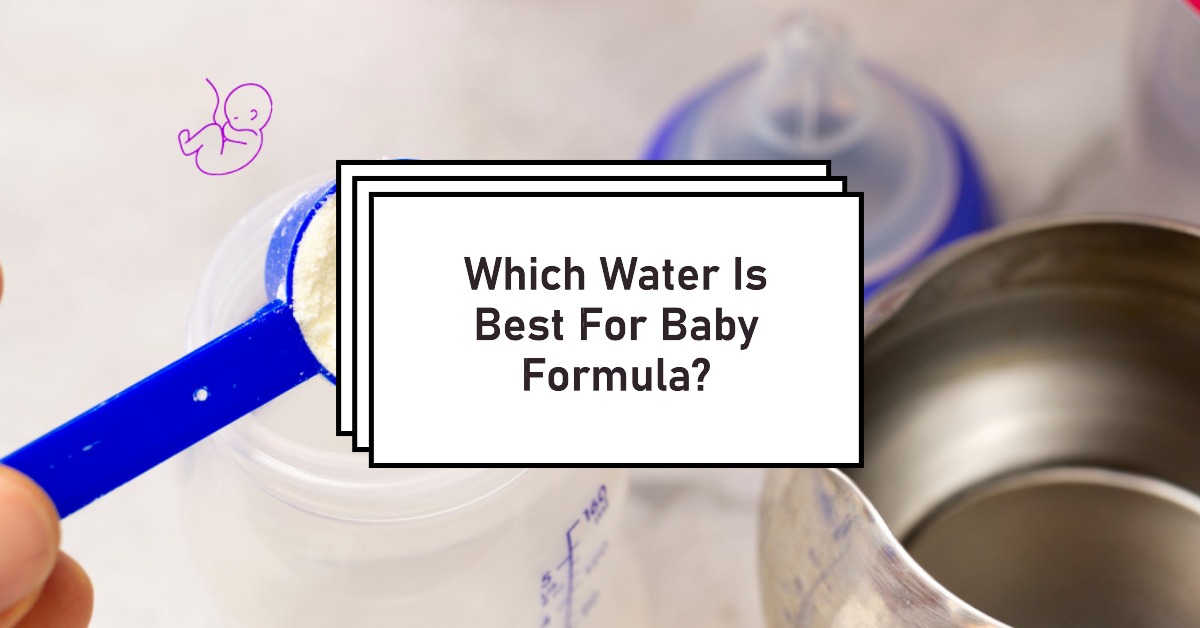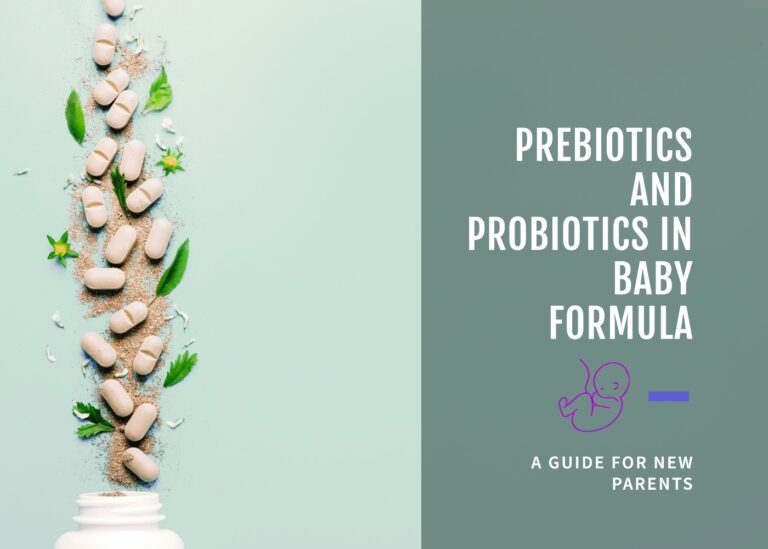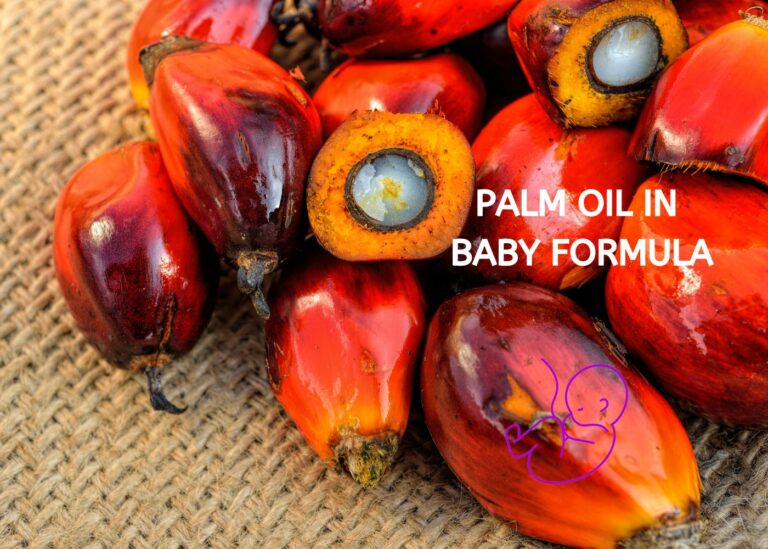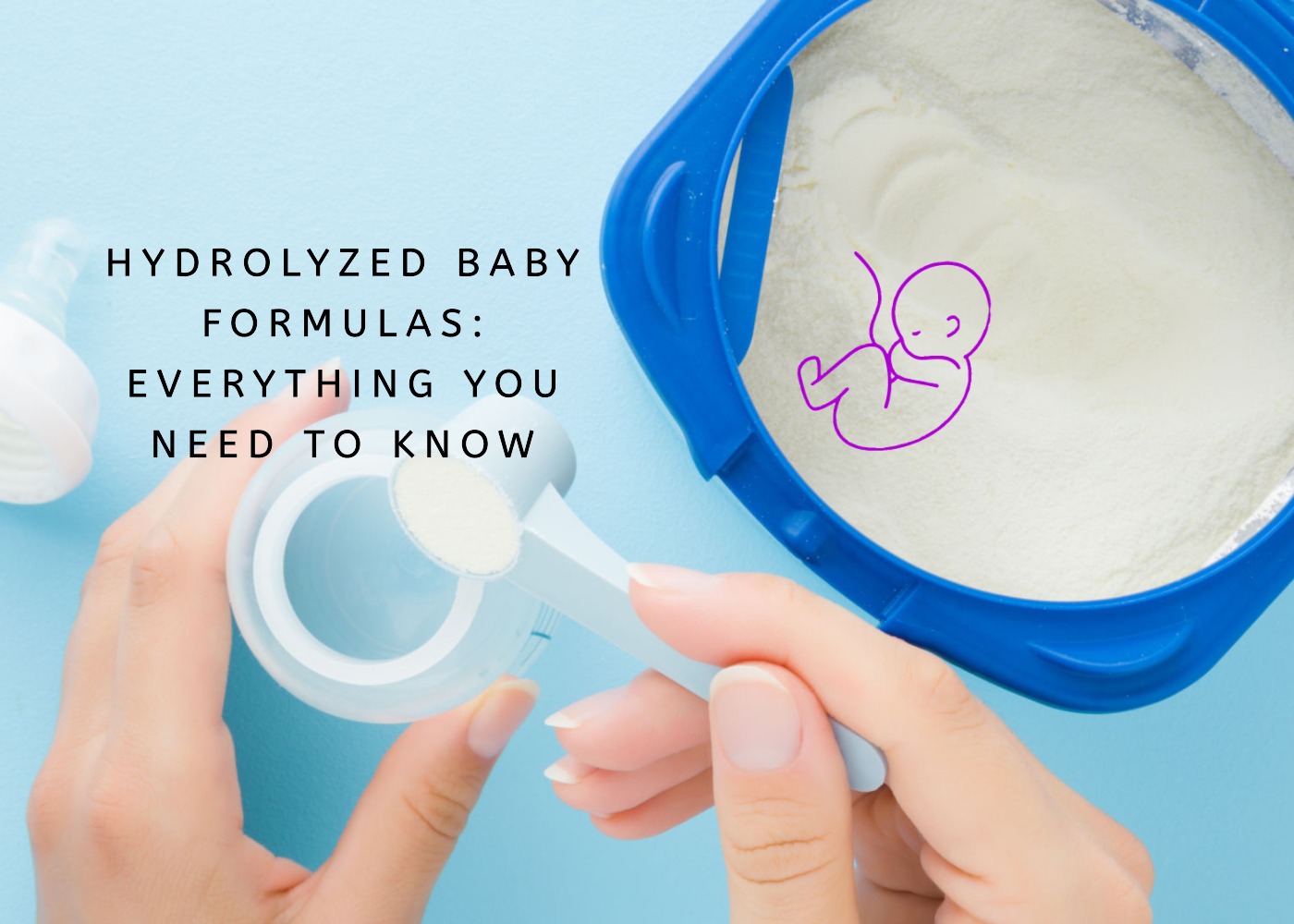
Key Takeaways
Hydrolyzed formulas are specially crafted to ease your little one’s digestion and manage formula allergies. They break down proteins into smaller parts – peptides – which are much simpler for tiny tummies to digest.
The two types of hydrolyzed formulas – partially and extensively hydrolyzed – offer varied benefits. Choose the right one based on your baby’s specific needs.
Despite their numerous benefits, hydrolyzed formulas have potential drawbacks, including a higher cost and a different taste for which some babies may need time to get used.
When switching to a hypoallergenic formula, consultation with your pediatrician is key! Always read labels carefully and closely monitor your baby’s response to the new formula.
Brands like HiPP, Gerber, Enfamil, and Similac offer a range of hydrolyzed formulas. Each brand brings its unique touch to the table. Choose what’s best for your little one.
Baby formulas are quite complicated to understand, and as a new parent, it’s easy to be overwhelmed, especially when your baby is experiencing digestive discomfort or allergies.
One option that pediatricians may recommend is hydrolyzed formulas or hypoallergenic formulas.
*Read: Best Hypoallergenic Formulas
These specialized products solve many common infant feeding challenges by breaking down proteins for easier digestion and reduced allergen exposure.
This blog will explore hydrolyzed formulas, their benefits, potential drawbacks, and how to choose the right one for your little one’s unique needs.
*Related: How to know if your baby does not agree with their formula
What Are Hydrolyzed Formulas?
Hydrolyzed formulas, or protein hydrolysate or hypoallergenic formulas, are unique infant formulas for babies experiencing digestive issues or cow’s milk protein intolerance.
These specialized formulas undergo hydrolysis, wherein the proteins present are broken down into smaller fragments called peptides.
Two main types of hydrolyzed formulas exist: partially hydrolyzed and extensively hydrolyzed.
Partially hydrolyzed formulas contain larger peptide fragments that can still cause some allergic reactions in infants with more severe sensitivities but tend to be less allergenic than regular cow milk-based formulas.
Extensively-hydrolyzed formulas have undergone a more thorough breakdown of proteins into individual amino acids suitable even for infants with significant allergies or intolerances.
How Are They Made?
Creating hydrolyzed formulas involves breaking down the proteins into smaller pieces, or peptides, to make them easier for babies to digest and less likely to cause an allergic reaction.
Source of Protein: The process begins with a protein source, typically cow’s milk. This milk contains two primary types of proteins, whey, and casein.
Hydrolysis Process: The proteins in the milk are then “hydrolyzed” or broken down. The term “hydrolysis” comes from the Greek words for “water” and “loosening,” reflecting that water is used to break the proteins apart. This process is achieved through heat and enzymes (special proteins that speed up chemical reactions in the body), which act like tiny scissors, cutting the protein molecules into smaller pieces.
Degree of Hydrolysis: The extent of the hydrolysis process can vary, resulting in different types of formulas. Partially hydrolyzed formulas have proteins broken down into medium-sized pieces, while extensively hydrolyzed formulas have proteins broken down into very small pieces. Extensively hydrolyzed formulas are typically used for babies with a diagnosed cow’s milk protein allergy, while partially hydrolyzed formulas are often used to promote easy digestion.
Removal of Excess Water: After hydrolysis, the liquid is usually heated to evaporate and remove excess water, resulting in a concentrated hydrolyzed protein solution.
Addition of Nutrients: Essential nutrients that a baby needs for their development, such as carbohydrates, fats, vitamins, and minerals, are then added to this solution.
Pasteurization: This new mixture is then pasteurized. This process involves heating the formula to kill any potentially harmful bacteria, ensuring the formula is safe for infants.
Drying: The pasteurized mixture is then spray-dried to transform it into a powder form, which is the typical format that you would buy it in stores.
Packaging: Finally, the powdered formula is packaged and ready to be sold. Mix the powder with water to reconstitute the formula to use it.
Partially Hydrolyzed vs Extensively Hydrolyzed Formulas
| Partially Hydrolyzed Formulas | Extensively Hydrolyzed Formulas | |
|---|---|---|
| Protein Size | Medium-sized peptides | Very small peptides and amino acids |
| Use Case | Easy digestion | Babies with cow’s milk protein allergy |
| Allergenic Potential | Lower than regular formulas, but higher than extensively hydrolyzed formulas | Very low allergenic potential |
| Taste | Closer to regular formula | Often described as more bitter due to smaller protein fragments |
| Price | Generally cheaper than extensively hydrolyzed formulas | Generally more expensive due to more complex processing |
| Digestibility | Easier to digest than regular formula but less than extensively hydrolyzed formulas | Easiest to digest |
| Recommended for Healthy Infants | Yes | Not typically, unless the infant has a diagnosed protein allergy |
Pros And Cons Of Hydrolyzed Formulas
Hydrolyzed formulas offer benefits such as managing cow’s milk allergy and colic, improved digestion and nutrient absorption, reduced risk of allergies and eczema, and hypoallergenic options.
Drawbacks include higher cost, potential constipation or gas, taste preference, altered nutritional content, and variable effectiveness.
Using hydrolyzed formulas may have benefits such as improved digestion and reduced risk of allergies.
Still, there are also possible drawbacks like cost and potential side effects.
Benefits of Hydrolyzed Formulas
Management of Cow’s Milk Allergy and Colic: Hydrolyzed formulas can help manage symptoms associated with cow’s milk protein intolerance and colic in infants.
Improved Digestion and Nutrient Absorption: Since the proteins in hydrolyzed formulas are already partially or extensively broken down, they are generally easier for babies to digest. This means that the body can more easily absorb nutrients from the formula.
Reduced Risk of Allergies and Eczema: Studies suggest that some hydrolyzed formulas may help prevent allergies in infants, especially if there is a family history of allergies or eczema.
Hypoallergenic: Partially hydrolyzed cow milk-based formulas are less allergenic than regular cow milk-based formulas, making them a good alternative for infants who have difficulty tolerating other types of infant formula.
Amino Acids: Some hydrolyzed formulas are made from protein hydrolysate or amino acids, which can be easier to digest than partially-hydrolyzed or regular infant formulas.
Possible Drawbacks And Limitations
Hydrolyzed formulas can be more expensive than regular formulas.
Some babies may experience constipation or gas when using partially hydrolyzed formulas.
Extensively hydrolyzed formulas have a taste that some infants may not like.
The hydrolysis process can affect the nutritional content of the formula, which means that more nutrients have to be added, increasing the processing of such formula.
While research suggests that some hydrolyzed formulas may help prevent allergies in high-risk infants, there is no guarantee that they will work for every infant.
How to choose the best hydrolyzed formula for your baby
1. Consult With Your Pediatrician
Before making any changes to your baby’s diet, it is important to consult with their pediatrician.
Your doctor can help you determine if a hydrolyzed formula is necessary for your child and recommend the best option based on their needs.
It’s particularly important to speak with a medical professional if your baby has a known or suspected allergy or intolerance.
Cow’s milk protein intolerance is one of the most common reasons parents may need to switch to a hydrolyzed formula.
Remember that other factors could also be at play, such as potential lactose intolerance or digestive discomfort for other reasons.
*Read: Lactose-free and low-lactose formulas
2. Read Labels And Ingredient Lists Carefully
Look for formulas labeled “partially hydrolyzed” or “extensively hydrolyzed.”
Pay attention to the type of protein source and ratio used in the formula.
Check for potential allergens, especially if your baby has a known allergy. Some hydrolyzed formulas may still contain traces of cow’s milk proteins or soy.
Take note of the carbohydrate sources used in the formula, such as lactose or corn syrup solids.
Look for added nutrients like iron, DHA, and other important vitamins and minerals.
Avoid formulas with added sugars and unnecessary ingredients.
3. Monitor Your Baby’s Response And Any Potential Side Effects
It is important to keep an eye on your baby’s response when introducing a hydrolyzed formula.
It may take some time for your baby to get used to the new formula, and it’s normal for them to experience some digestive discomfort or changes in bowel movement.
Some potential side effects of partially hydrolyzed formulas may include constipation or gas.
If your baby experiences these symptoms for an extended period of time or seems uncomfortable, talk to your pediatrician about adjusting the dosage or switching to a different type of hydrolyzed formula.
Top Brands that sell hydrolyzed formulas
HiPP
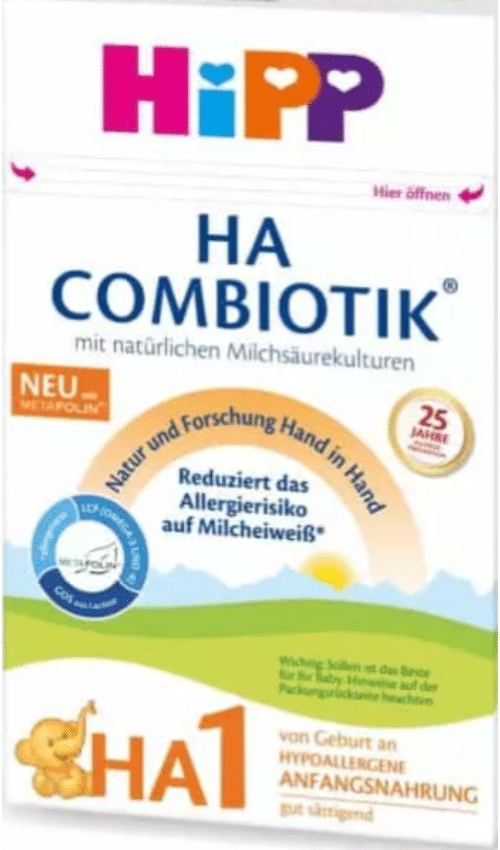
HiPP offers two main hydrolyzed formulas: HiPP Comfort and HiPP HA. *Read: Hipp Comfort vs HA
Both formulas feature extensively hydrolyzed whey protein, meaning the proteins have been broken down to be easier to digest.
HiPP Comfort is technically not labeled as a hypoallergenic formula in the EU for regulatory reasons, but it is most similar to US hypoallergenic formulas.
The whey protein is 86-87% broken down and doesn’t contain casein. It also has a reduced lactose content. This formula is typically indicated for gassiness, colic, and constipation babies. In practice, parents seeking a hypoallergenic formula have found success with Comfort, making it a potential choice for babies sensitive to whey and casein.
HiPP HA, much like Comfort, contains extensively hydrolyzed whey protein and no casein. These formulas do not have a reduced lactose content like the Comfort variety.
Gerber

Gerber offers a variety of hydrolyzed formulas, with Gerber Extensive HA standing out as a 100% hydrolyzed formula.
Gerber also offers GentlePro and SoothePro, both partially hydrolyzed whey protein formulas, with prebiotics and other non-required extras like Carnitine, Taurine, and Nucleotides.
Enfamil
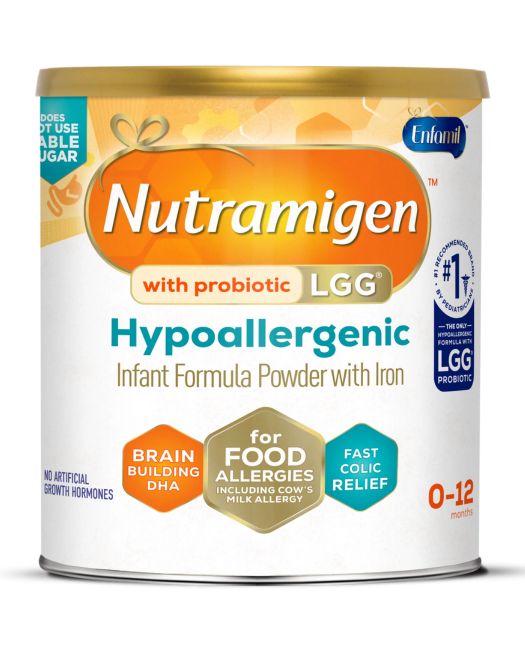
Enfamil is a well-known brand in infant nutrition, and their Nutramigen with Enflora LGG is a popular hydrolyzed formula.
This hypoallergenic formula is designed to manage cow’s milk protein allergy in babies.
It uses extensively hydrolyzed protein.
Similac
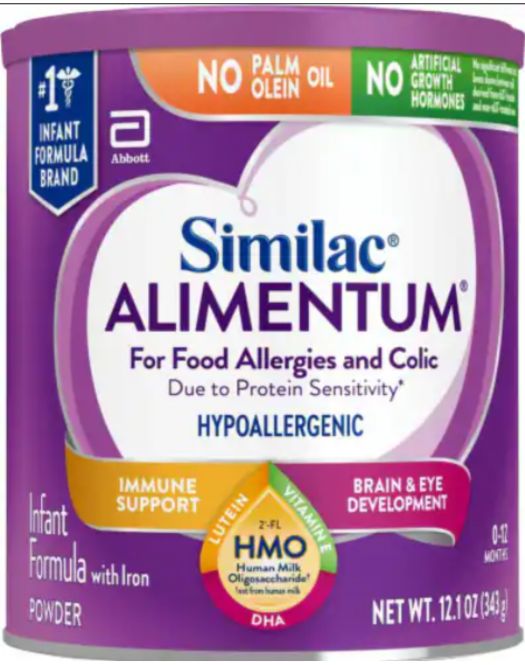
Similac Alimentum Hypoallergenic formula is also made for infants with food allergies, including those with colic symptoms due to protein sensitivity.
Similac Alimentum contains extensively hydrolyzed protein, which minimizes the chance of an allergic reaction.
Last Words
Nourishing your little one is a complex task that requires a fine balance of nutrients, proteins, and love ?.
Hydrolyzed formulas are an excellent choice for those precious munchkins who need extra care due to digestive issues or cow’s milk protein intolerance.
These formulas are expertly designed to break down proteins into manageable fragments, making it easy-peasy for your baby to digest and absorb the necessary nutrients.
Remember, partially hydrolyzed formulas are better suited for easier digestion, while extensively hydrolyzed ones are the go-to for infants with significant allergies or intolerances.
We’re Maria and Alberto, a married couple and educators who are nutrition enthusiasts. Even before we had kids, we were already crazy about nutrition.
We’d read scientific articles, watch videos from nutritionists, and spend hours listening to nutrition podcasts.
Today, we continue doing this, but in a different way, as we’ve learned to sift through the noise and trends. Nutrition, like any other field of knowledge, the more you read and learn, the more you develop a comprehensive understanding of reality, and that’s what has happened to us.
Before having our first child, we focused on learning everything we could about child nutrition, using the same techniques we had already employed, backed by our extensive knowledge in nutrition.
Our mission is to help other parents with their children’s nutrition, to help them become the best versions of themselves.
If we are what we eat and drink, which is absolutely true, let’s do it right!


